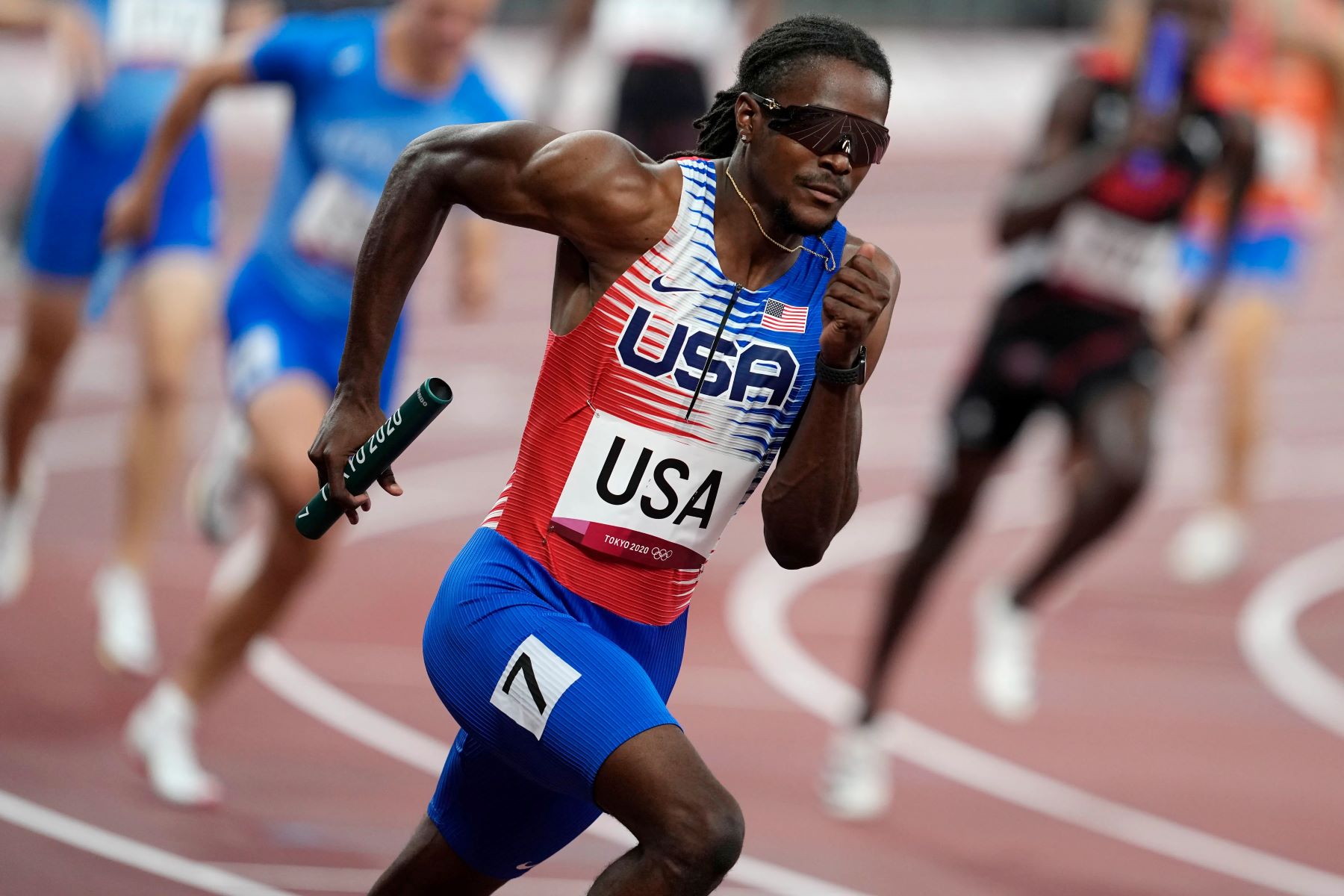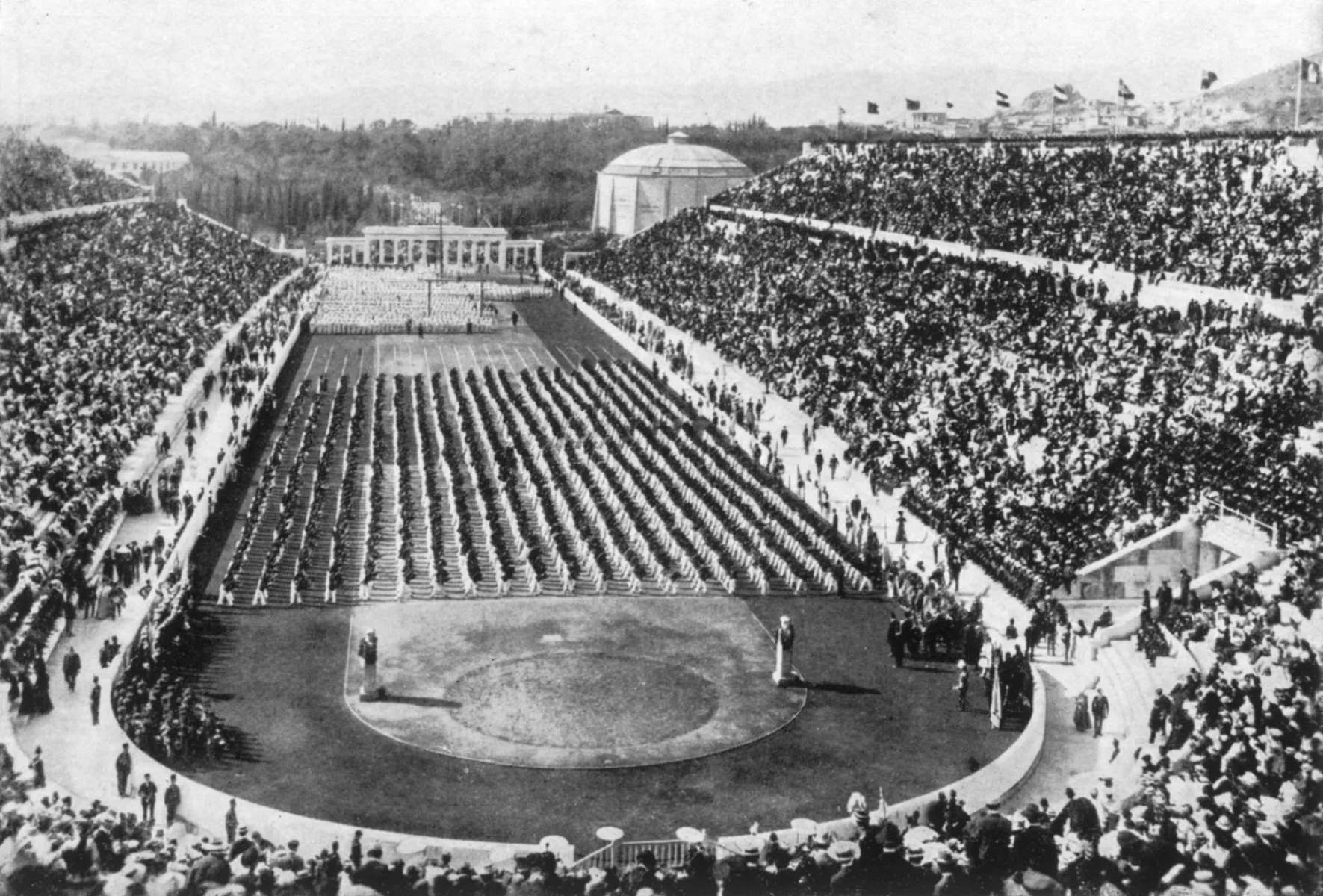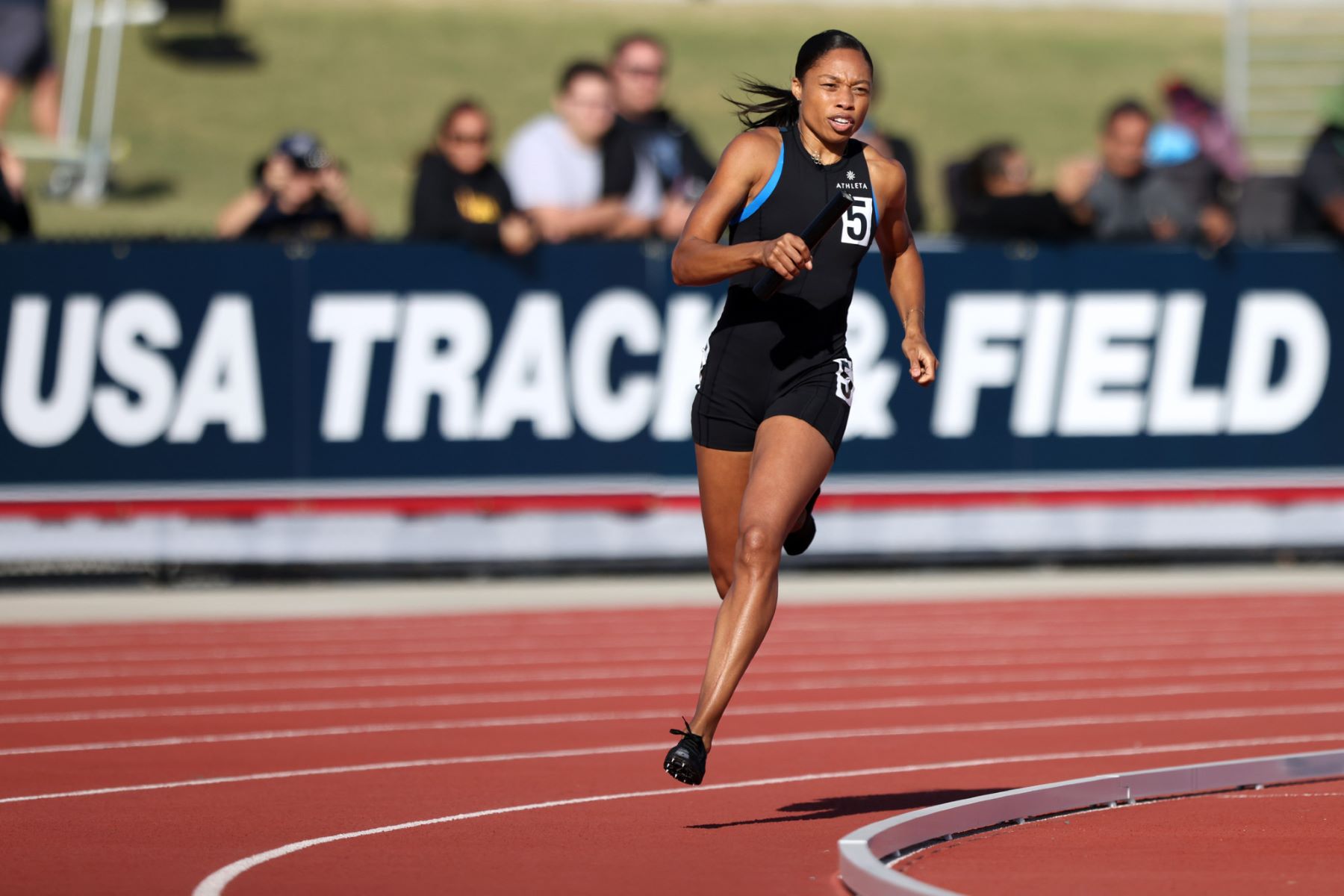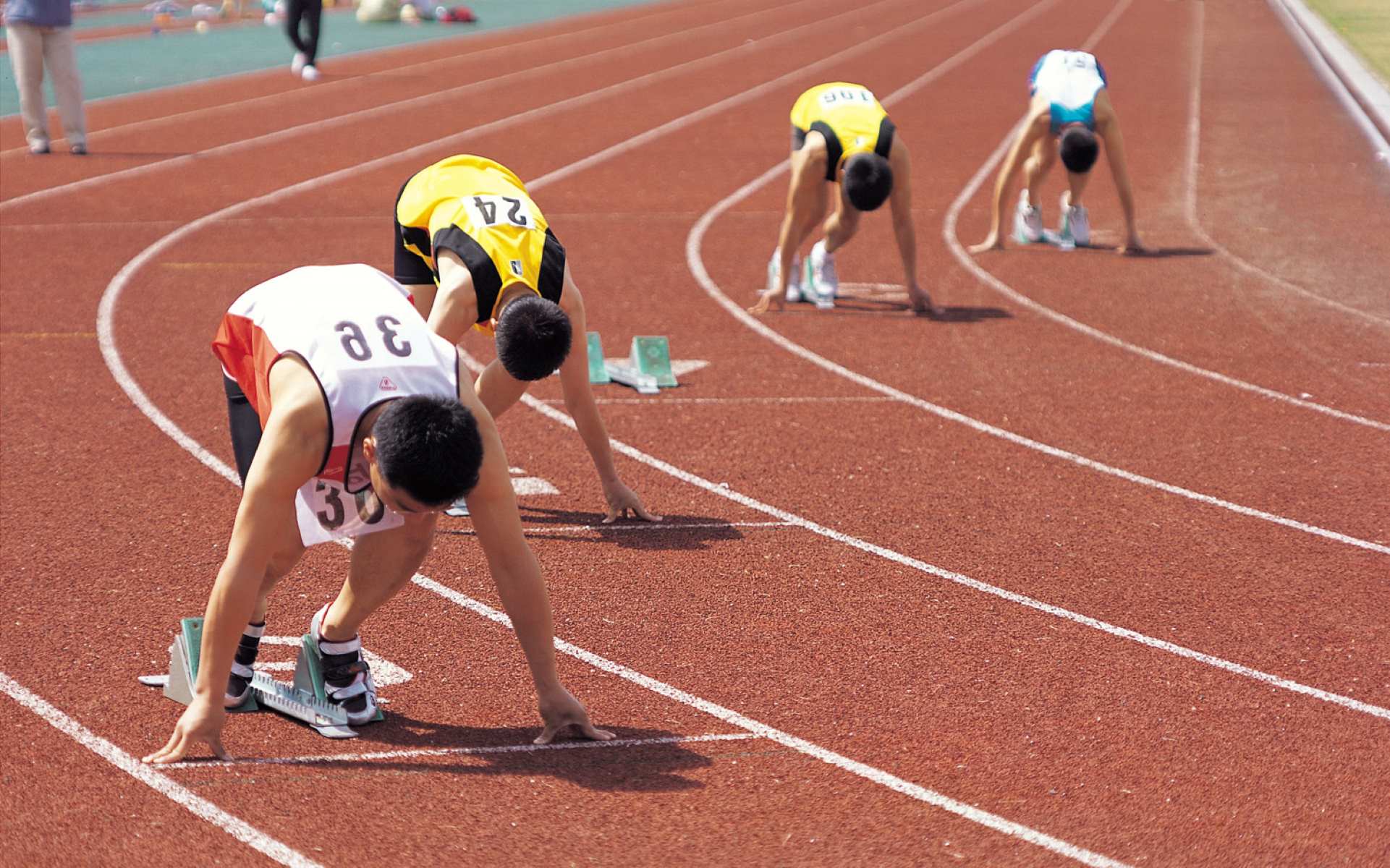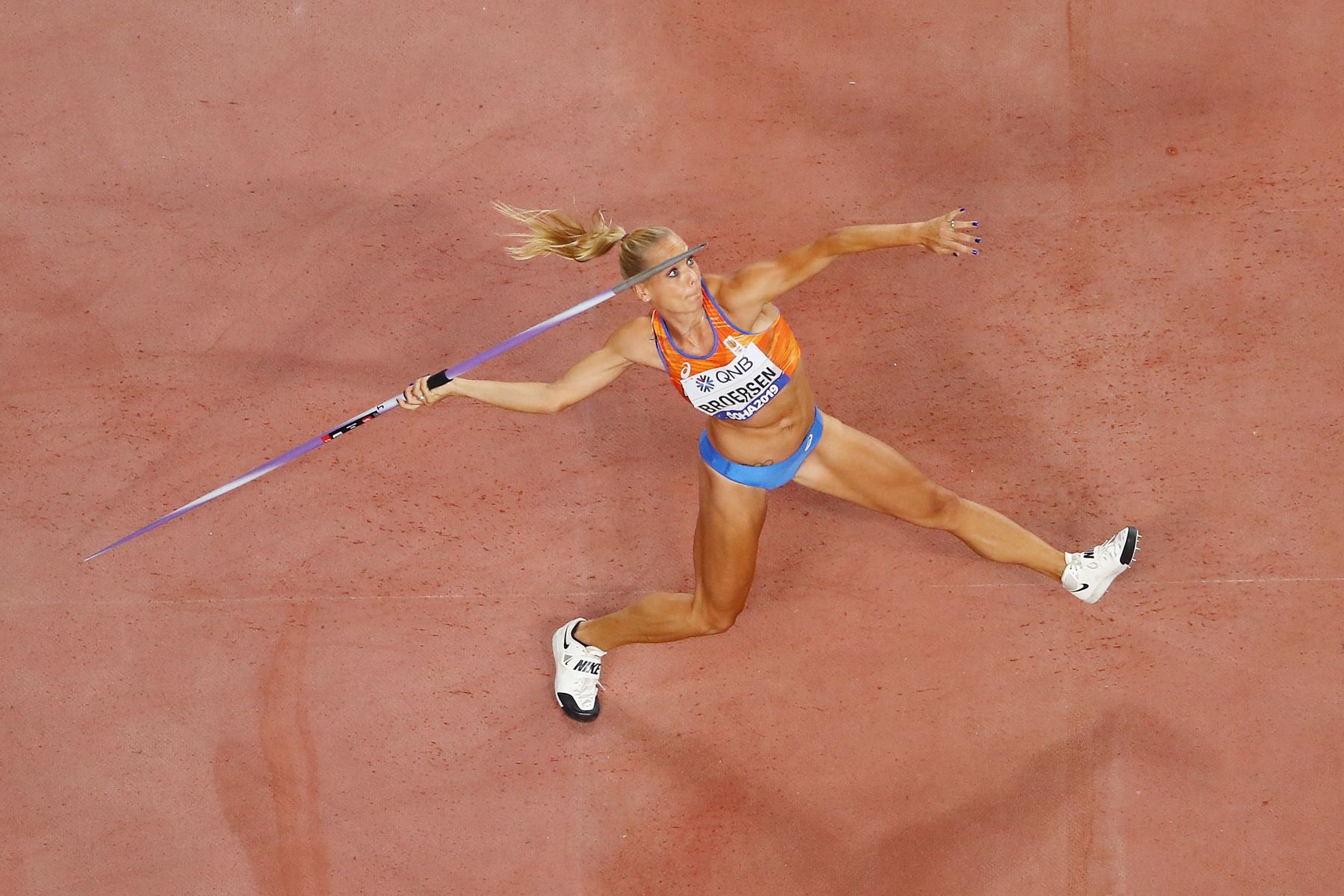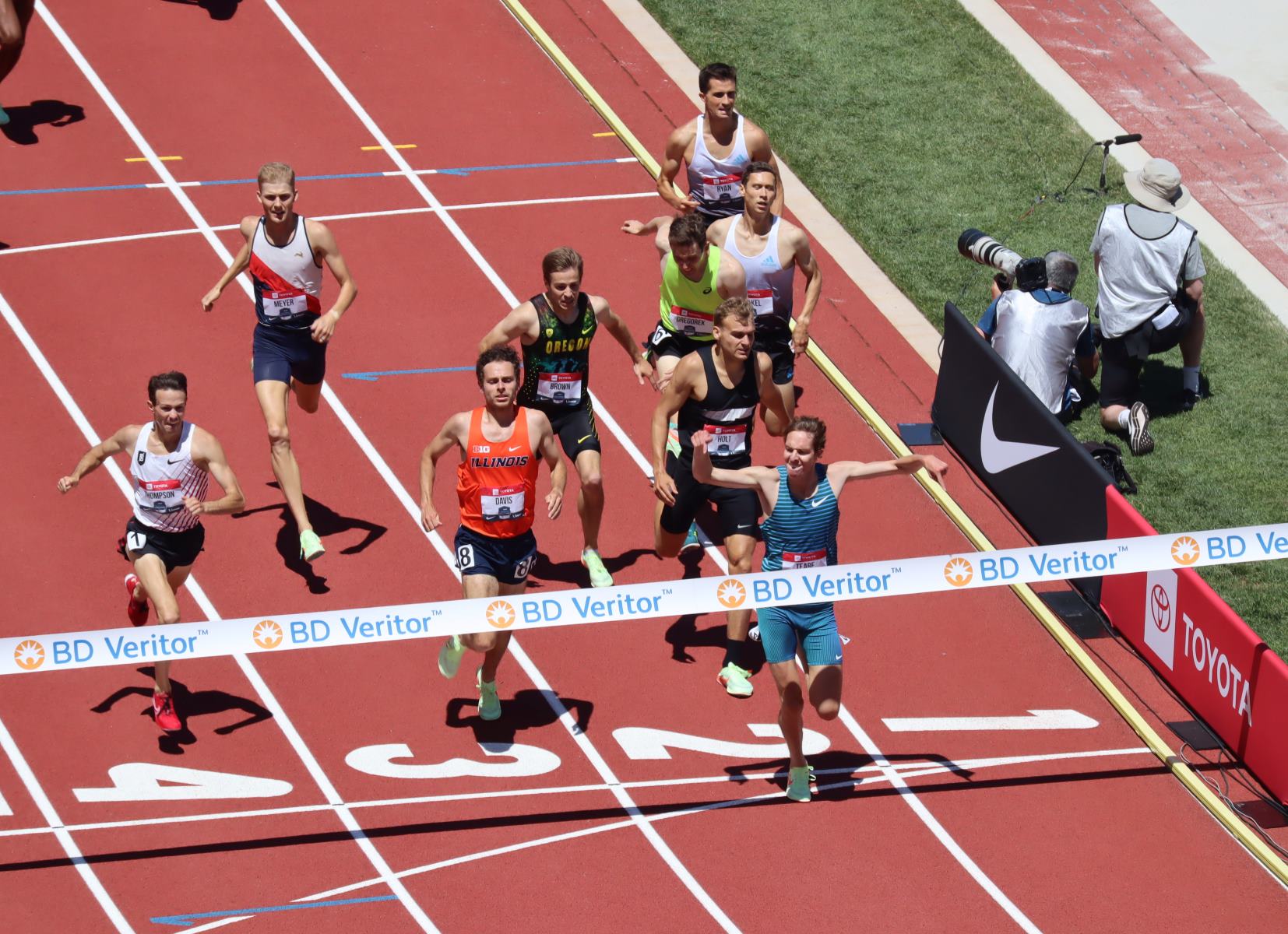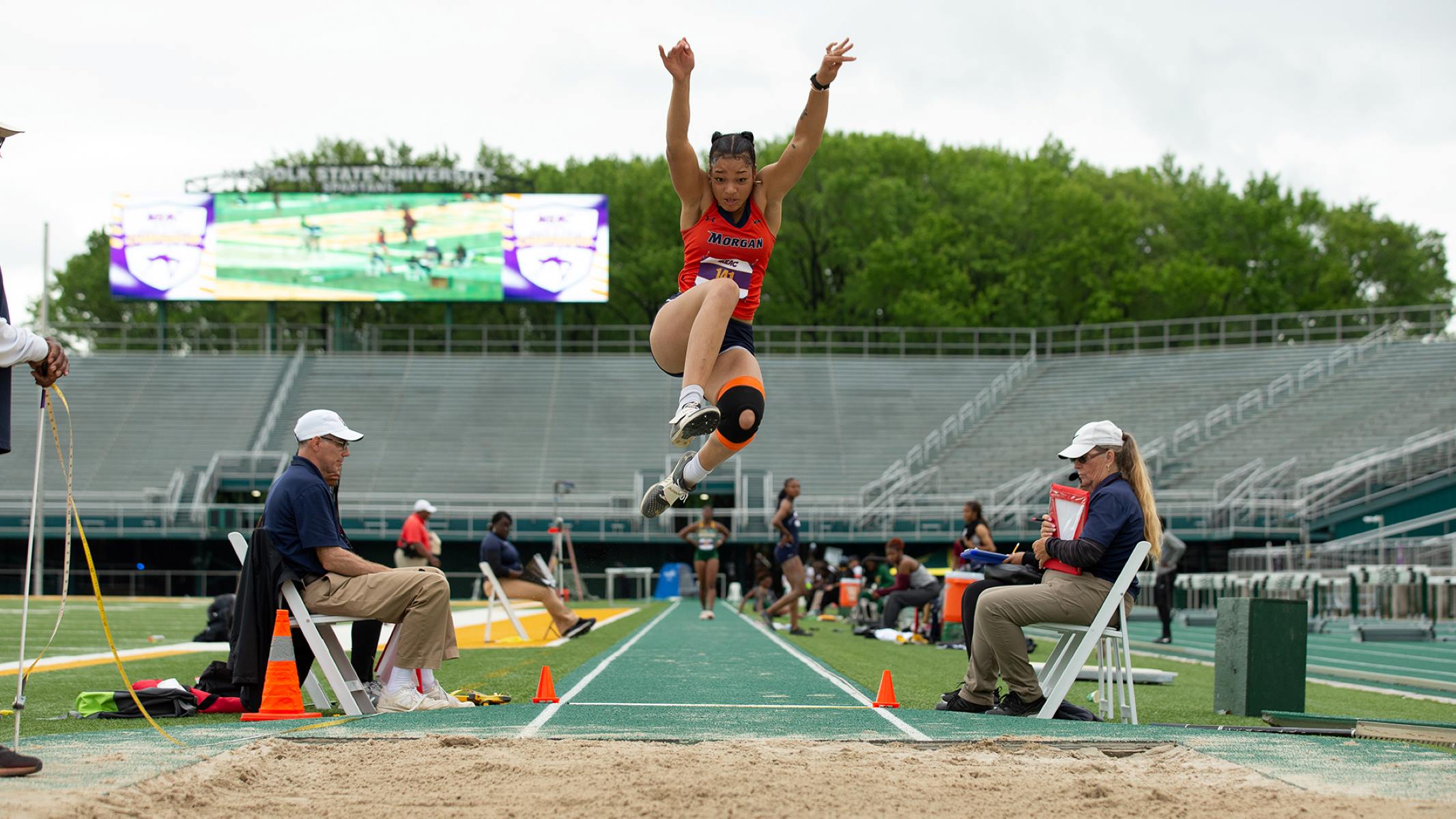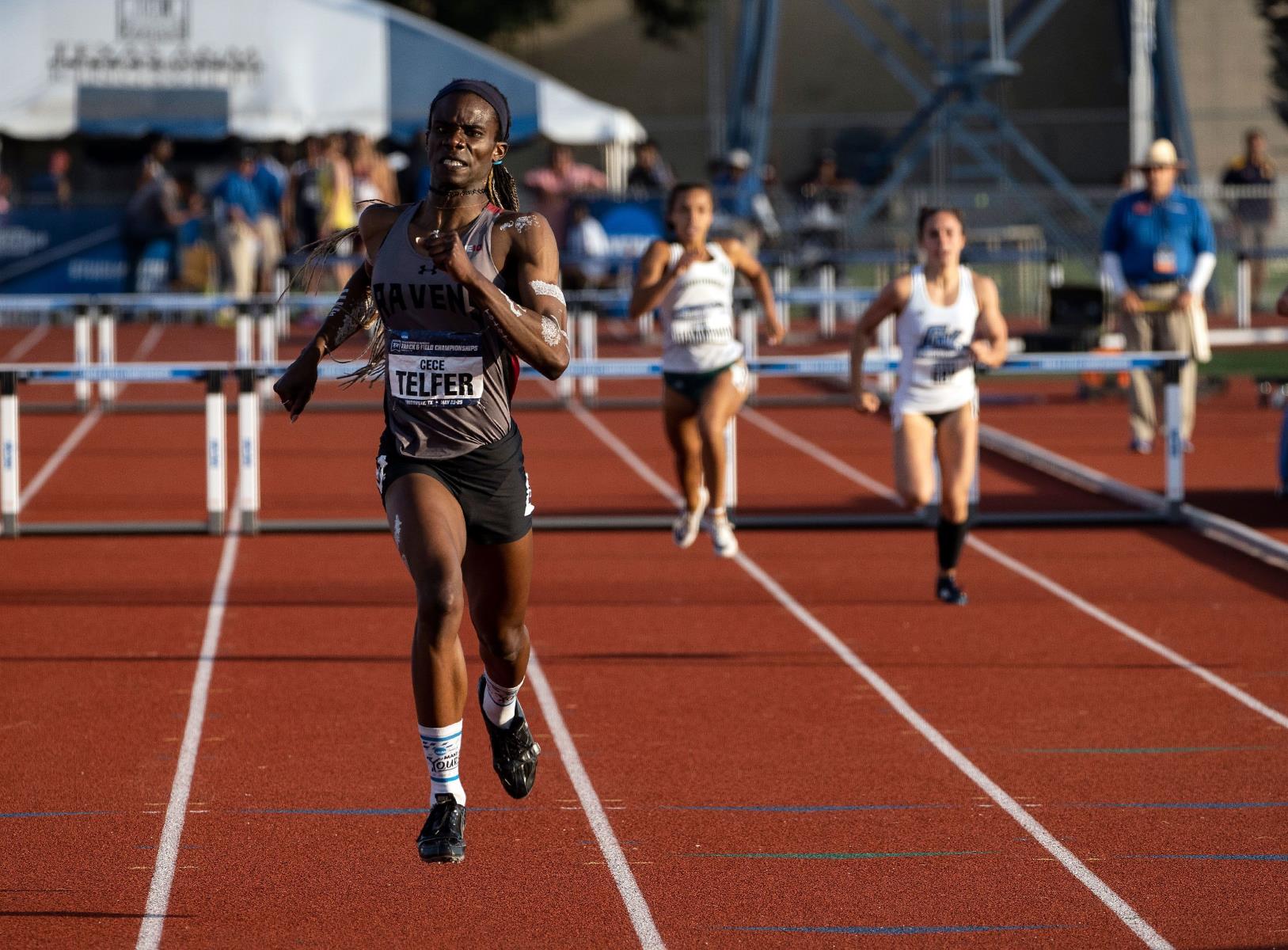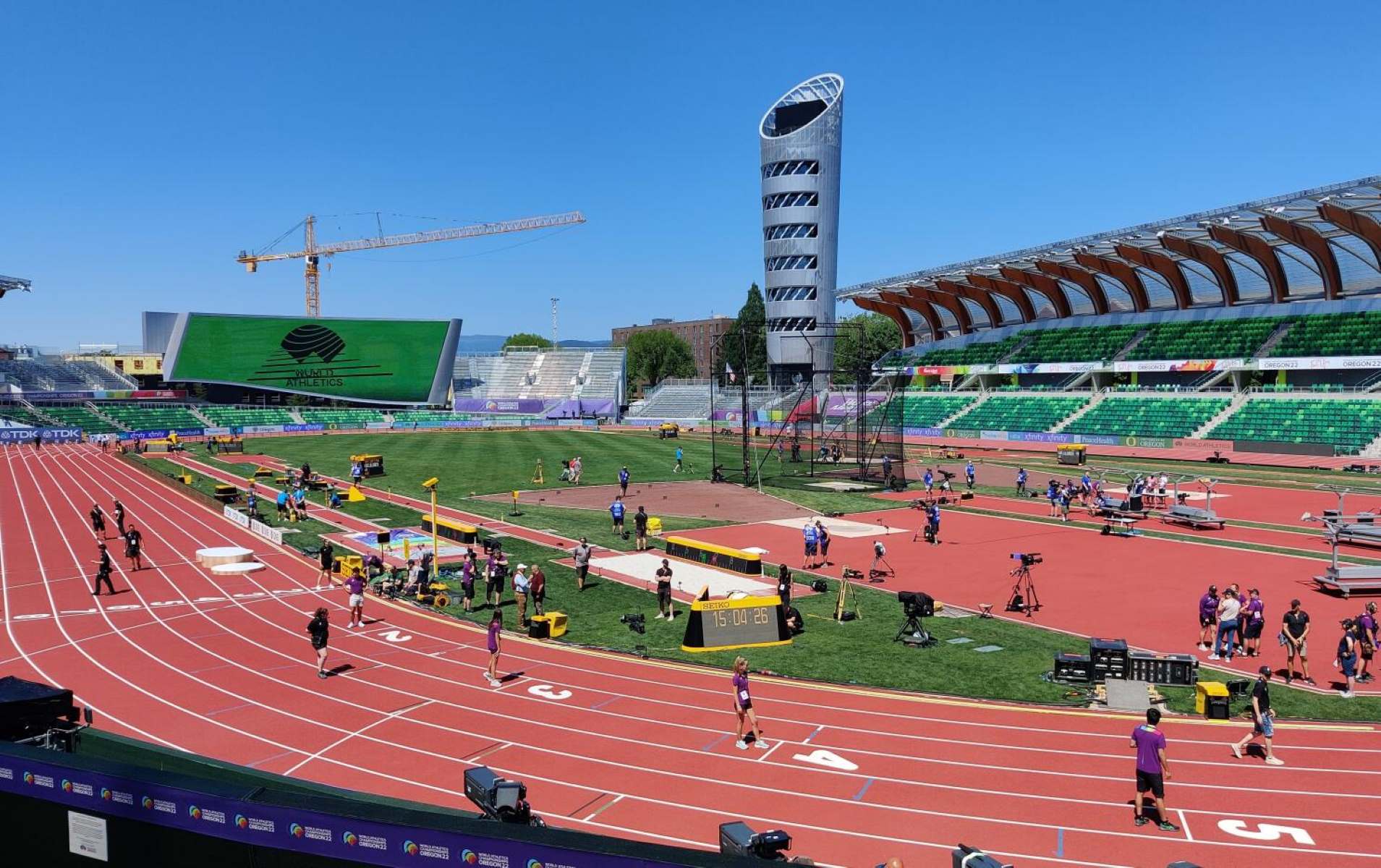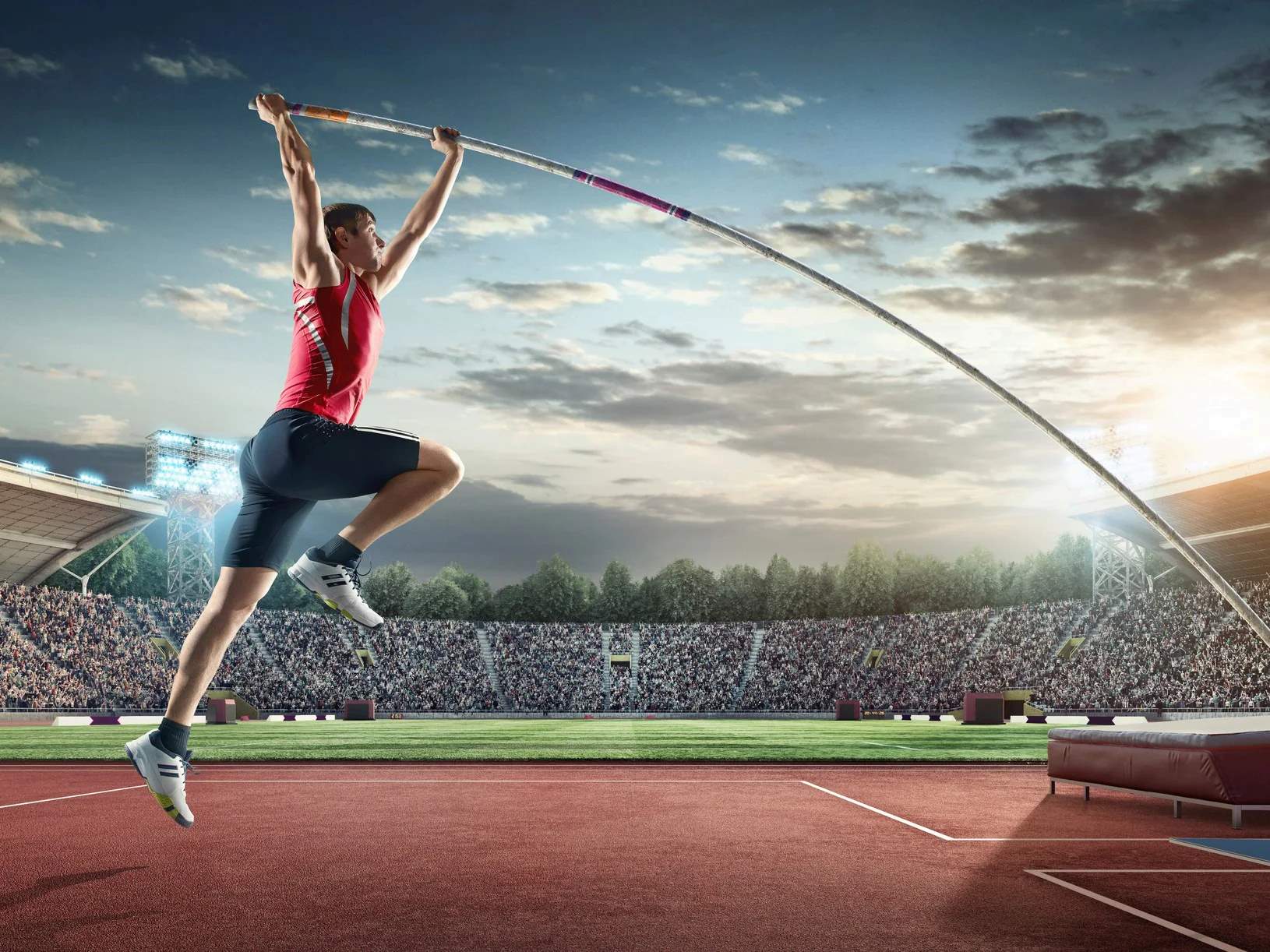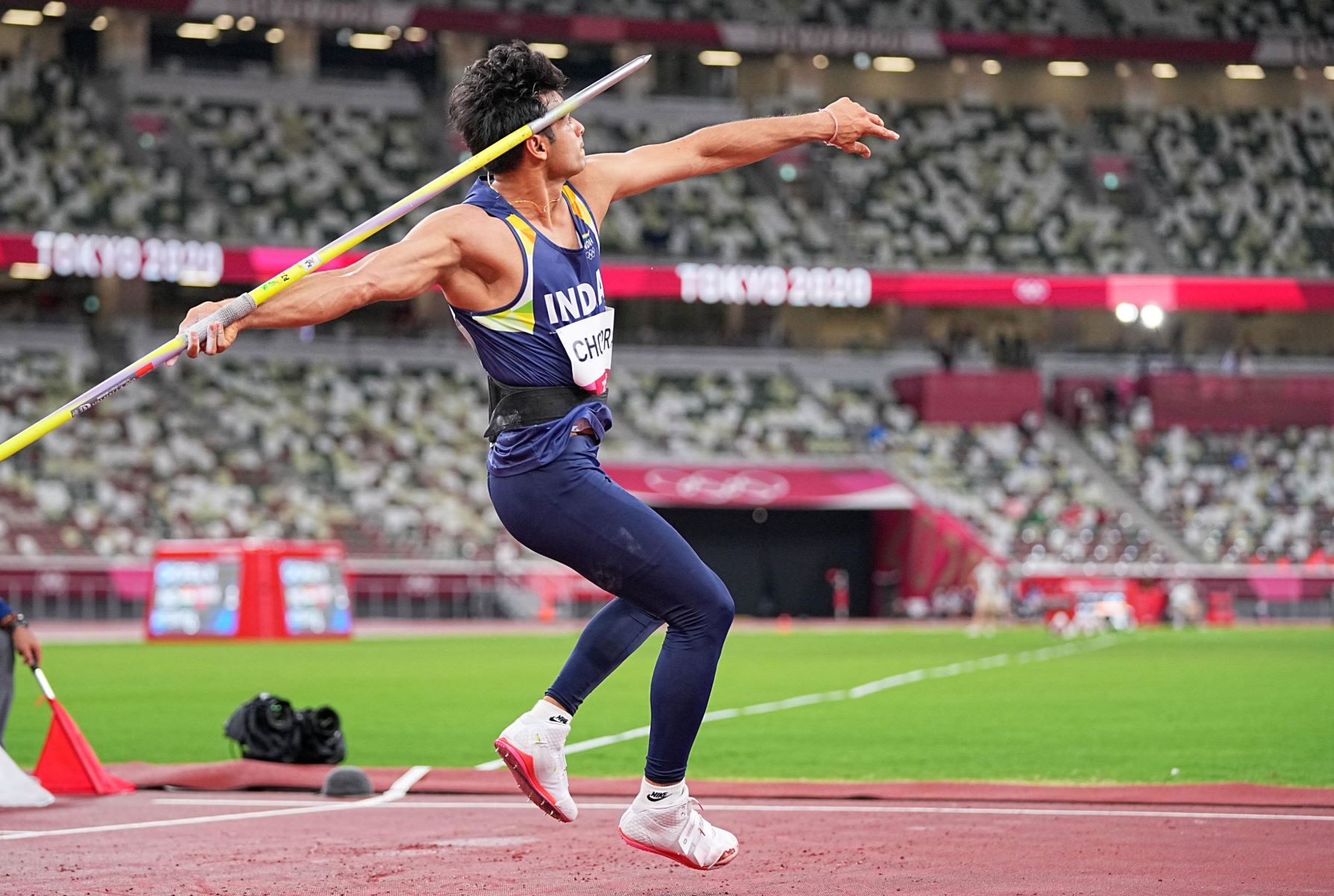

Featured
What Is Javelin In Track And Field
Published: September 5, 2023
Discover the thrill and precision of the javelin in track and field. Learn what makes it a featured event and how athletes master this challenging discipline for maximum distance and accuracy.
Introduction
Track and field is a sport that encompasses a variety of events, each requiring distinct skills and techniques. One such event is the javelin throw, a discipline that combines strength, agility, and precision. The javelin is a spear-like implement that athletes throw as far as possible, aiming to achieve impressive distances and secure victory.
The javelin throw holds a significant place in the world of athletics, dating back to ancient times. Originally used as a weapon in warfare, the sport has evolved into a modern-day athletic event that captivates audiences worldwide. The combination of explosive power, technique, and strategic thinking makes javelin one of the most fascinating events in track and field.
This article will delve into the intricate world of javelin in track and field, exploring its definition, various events, equipment specifications, techniques, training methods, common mistakes, and notable athletes in the field. Whether you’re a novice spectator or an aspiring athlete, this article will provide valuable insights into the thrilling discipline of javelin throwing.
So, get ready to delve into the fundamentals of javelin in track and field and discover the exciting world behind this captivating sport.
Definition of Javelin in Track and Field
The javelin is a field event in track and field that involves throwing a spear-like implement called a javelin. It is one of the oldest events in track and field, dating back to ancient times when it was primarily used as a weapon in hunting and warfare. In contemporary track and field, the javelin has become a specialized discipline that requires a unique set of skills and techniques.
The objective of the javelin throw is to propel the javelin as far as possible within a predetermined throwing area. The athlete must generate sufficient speed and power to launch the javelin with optimal trajectory and precision. The distance is measured from the point of impact on the ground to the mark where the javelin landed.
Competitive javelin throwing is regulated by governing bodies such as World Athletics and USA Track and Field. They establish specific rules and regulations to ensure fair play and consistent standards across competitions. Athletes are classified into various age groups and compete in events based on their gender and skill level.
The javelin event consists of both men’s and women’s categories, with slight variations in the weight and dimensions of the javelin for each. In men’s competitions, the javelin weighs 800 grams and is 2.7 meters in length, while in women’s competitions, the javelin weighs 600 grams and is 2.2 meters in length.
Overall, the javelin throw requires a combination of strength, speed, agility, and technique. Athletes must develop excellent coordination, balance, and timing to generate maximum force and achieve optimal throwing distances. The skilled manipulation of the javelin during the throwing motion is essential to achieve the desired flight and distance.
Now that we have established the basic definition of javelin in track and field, let’s dive deeper into the different events and competitions associated with this discipline.
Javelin Events in Track and Field Competitions
Javelin events in track and field competitions can vary depending on the level of competition and the specific governing body’s regulations. Generally, there are four main types of javelin events: individual competitions, relay competitions, decathlon/heptathlon, and special events.
In individual competitions, athletes participate in standalone javelin events where they throw the javelin in a series of attempts. The athlete with the longest throw wins the event. These individual competitions are the backbone of track and field meets, from local school competitions to international championships.
Relay competitions incorporate javelin throwing into a team-based event. Typically, each team member takes turns throwing the javelin, with the overall performance of the team determining the final standings. These relay events add an element of teamwork and strategy to the javelin discipline, making them a thrilling addition to track and field competitions.
Decathlon (for men) and heptathlon (for women) are combined events consisting of multiple disciplines, including javelin throwing. Athletes compete in ten or seven different events, respectively, over two or three consecutive days. The javelin throw is one of the events in the decathlon/heptathlon, and each athlete is awarded points based on their performance. The overall winner is determined based on the cumulative points earned across all events, making decathlon and heptathlon the ultimate test of multi-discipline athletes.
In addition to the standard events, there may also be special javelin events held in track and field competitions. These events could include exhibition matches, relay races with unique rules, or variations of the javelin throw aimed at entertaining the audience and showcasing the skill and athleticism of the athletes.
It’s worth noting that track and field competitions vary in the number of attempts each athlete gets in the javelin event. In some competitions, athletes have six throws, while in others, it may be limited to three or even a single attempt. The best result from these attempts is taken into consideration for determining the final rankings and winners.
Javelin events in track and field competitions are not only thrilling to watch but also require athletes to showcase their expertise, strength, and precision. The unique combination of individual and team-based events adds diversity and excitement to the sport while testing the athletes’ abilities across different formats.
Now that we have explored the various javelin events, let’s move on to discussing the equipment and specifications of the javelin in track and field.
Javelin Equipment and Specifications
Javelin throwing requires specialized equipment to ensure fair play and consistent standards across competitions. The javelin itself is a carefully crafted implement that must meet specific specifications set by organizations such as World Athletics and USA Track and Field.
The javelin is a spear-like object made of various materials, commonly including metal or carbon fiber. It is designed to achieve maximum distance and stability when thrown through the air. The weight, length, and center of gravity of the javelin are crucial factors in determining its flight characteristics.
For men’s competitions, the standard weight of the javelin is 800 grams, whereas in women’s competitions, the javelin weighs 600 grams. The length of the javelin differs as well, with men’s javelins measuring 2.7 meters and women’s javelins measuring 2.2 meters. These variations account for biological differences and ensure a level playing field for athletes.
The javelin is carefully balanced to achieve optimal flight performance. It must have a center of gravity within a specific range to ensure fair competition. The balance point is usually marked on the javelin to help athletes grip the implement correctly and achieve the desired throwing technique.
The grip section of the javelin is covered with a grip tape or cord to enhance the athlete’s hold during the throwing motion. The grip provides stability and control while allowing the athlete to generate maximum power and speed during the throw. It is essential for athletes to maintain a firm grip throughout the throwing action to achieve optimal results.
When it comes to safety, the javelin has a blunted tip to minimize any potential injuries. This modification ensures that the javelin remains stable in flight and reduces the risk of penetrating the ground too deeply. Safety precautions are of utmost importance in track and field, and the javelin’s design considers the well-being of both the athletes and the officials involved.
It’s also worth mentioning that athletes have the opportunity to choose a specific javelin for their throwing needs. Different athletes may have personal preferences based on their throwing style, technique, and individual strengths. Some may prefer a javelin with a more front-heavy weight distribution, while others may opt for a javelin with a slightly rear-heavy balance. These choices allow athletes to tailor the equipment to their unique requirements.
Overall, the javelin equipment and specifications in track and field play a vital role in ensuring fair competition, athlete safety, and optimal flight performance. Athletes must familiarize themselves with the specific regulations regarding the weight, length, balance, and grip of the javelin to achieve their best throwing results.
Now that we understand the equipment side of javelin in track and field, let’s explore the techniques and skills involved in successful javelin throwing.
Techniques and Skills in Javelin Throwing
Javelin throwing requires a combination of strength, agility, and proper technique to achieve maximum performance. Mastering the fundamental techniques and developing essential skills are crucial for athletes aiming to excel in the sport. Let’s explore some of the key techniques and skills involved in successful javelin throwing.
Grip and Approach: The grip is a crucial aspect of javelin throwing. Athletes grip the javelin with their thumb and forefinger, creating a secure and stable hold. The approach is another essential element, where athletes build momentum by taking several steps before the throw. Finding the right balance between speed and control during the approach is crucial for optimal performance.
Throwing Sequence: The throwing sequence involves a coordinated motion of the entire body, starting from the legs and moving up through the core, shoulder, and arm. The athlete transfers energy from the lower body to generate maximum power during the throw. Proper sequencing and coordination of the body movements are essential for achieving optimal throwing distances.
Crossover: The crossover is a technique employed during the approach phase where the athlete crosses one leg over the other as a means of generating rotational power. This motion helps build torque, enabling the athlete to unleash additional energy during the throwing motion.
Release: The release of the javelin is a critical moment where the athlete lets go of the implement. Timing and precision are crucial factors in achieving a clean and effective release. Proper wrist action and a smooth follow-through are essential for ensuring a straight and accurate flight of the javelin.
Posture and Balance: Maintaining proper posture and balance throughout the throwing motion is vital. Athletes must have a strong and stable base to generate maximum force and transfer that energy efficiently through their bodies. A solid foundation allows for better control and increased throwing distances.
Technique Refinement: Javelin throwing requires continuous refinement of technique. Athletes and coaches work together to analyze video footage, focus on specific areas for improvement, and make adjustments to optimize performance. Regular practice sessions and feedback help athletes refine their techniques and achieve consistent results.
Physical Conditioning: Alongside technique, physical conditioning plays a significant role in javelin throwing. Athletes need strength, power, and flexibility to generate the speed and force necessary for optimal throws. Exercises such as weightlifting, plyometrics, and core strengthening are often incorporated into training regimens to enhance overall athletic performance.
Mental Preparation: Javelin throwing also requires mental fortitude. Athletes need to stay focused, confident, and composed during competitions. Mental preparation techniques such as visualization, goal-setting, and positive self-talk are utilized to help athletes perform at their best when it matters most.
Developing these techniques and skills takes time, practice, and dedication. Athletes must focus on honing their craft, receiving proper coaching, and continuously striving for improvement. By mastering these fundamentals, athletes can enhance their overall performance and excel in the exciting and challenging discipline of javelin throwing.
Now that we’ve explored the techniques and skills in javelin throwing, let’s delve into the training and conditioning methods used by javelin throwers to maximize their potential.
Training and Conditioning for Javelin Throwers
Training and conditioning are essential for javelin throwers to develop the strength, power, technique, and endurance necessary for successful performances. Javelin throwers engage in specific training programs designed to optimize their physical capabilities and enhance their skills. Let’s explore some of the key aspects of training and conditioning for javelin throwers.
Strength and Power Training: Javelin throwers need to develop explosive power and strength to generate maximum force during the throw. Strength training exercises such as squats, deadlifts, and bench presses are commonly incorporated into their training routines. Plyometric exercises, such as box jumps and medicine ball throws, help improve power and explosive movements.
Flexibility and Mobility: Javelin throwers must have sufficient flexibility and mobility to execute the throwing motion effectively. Dynamic stretching exercises, yoga, and mobility drills are often incorporated into their training to improve range of motion, joint stability, and overall flexibility.
Technical Practice: Regular practice sessions focusing on technique refinement are crucial for javelin throwers. They work on various aspects of the throw, including grip, approach, release, and follow-through. Video analysis and feedback from coaches are used to identify areas for improvement and make necessary adjustments.
Endurance Training: Javelin throwing requires both anaerobic and aerobic endurance. Athletes engage in cardiovascular exercises such as running, cycling, or swimming to improve their overall endurance. High-intensity interval training (HIIT) is also commonly incorporated to simulate the bursts of effort required during the competition.
Core Strength and Stability: Javelin throwers rely on a strong and stable core for optimal performance. Core strengthening exercises, such as planks, Russian twists, and medicine ball rotations, are incorporated into their training routine. Developing a solid core improves balance, stability, and transfer of power throughout the throwing motion.
Coordination and Balance: Javelin throwers work on improving their coordination and balance to execute precise and controlled movements. Exercises that challenge balance, such as single-leg drills and stability exercises on unstable surfaces, help enhance these skills. Coordination drills that involve multi-joint movements, like jumping and throwing exercises, are also beneficial.
Mental Conditioning: Javelin throwers engage in mental conditioning techniques to develop focus, concentration, and confidence. Visualization exercises, mental imagery, and meditation are commonly utilized to enhance mental toughness and improve performance under pressure. Setting goals and developing a positive mindset are also essential parts of mental conditioning.
Recovery and Rest: Adequate rest and recovery are crucial for javelin throwers to avoid overtraining and minimize the risk of injury. They incorporate rest days into their training schedules and prioritize proper sleep, nutrition, and hydration. Regular sports massages, stretching, and foam rolling help with recovery and muscle tissue repair.
Periodization: Javelin throwers follow a periodized training approach, dividing their training into specific phases throughout the year. These phases focus on different aspects of the training, including strength building, technique refinement, competition preparation, and recovery. Periodization ensures athletes peak at the right time and minimize the risk of overtraining.
By following a well-rounded training and conditioning program, javelin throwers can optimize their athletic potential, improve their throwing performance, and reduce the risk of injuries. Consistency, discipline, and a comprehensive approach to training are key factors in the success of javelin throwers.
Now that we have explored training and conditioning, let’s discuss some common mistakes in javelin throwing and how athletes can improve their performance.
Common Mistakes and How to Improve Javelin Throwing
Javelin throwing is a highly technical and demanding sport that requires precision and skill. Aspiring javelin throwers often encounter common mistakes that can hinder their performance and limit their throwing distances. Here are some of the most common mistakes in javelin throwing and tips on how to improve them:
1. Incorrect Grip: A common mistake among javelin throwers is an incorrect grip on the implement. It is crucial to grip the javelin correctly, with the thumb and forefinger providing a firm hold. Practice gripping the javelin precisely, ensuring that the grip is secure but not too tight.
2. Poor Approach: The approach is a key element in javelin throwing, and a flawed approach can lead to suboptimal throws. One mistake is taking too many or too few steps during the approach. Work with a coach to develop a consistent and controlled approach, focusing on generating momentum and proper timing.
3. Inadequate Lower Body Engagement: Another common mistake is not utilizing the lower body effectively during the throw. The legs and hips are essential for generating power. Make sure to engage the lower body by driving the leg forward during the approach, transferring energy from the ground up through the body for a powerful release.
4. Early Release: Releasing the javelin too early is a prevalent mistake that can result in shorter distances. Practice timing and coordination to ensure that the release occurs at the right point in the throwing motion. Focus on maintaining a strong grip and releasing the javelin with a smooth follow-through.
5. Insufficient Posture and Balance: Poor posture and balance can significantly impact javelin throwing. It is essential to maintain an upright posture throughout the throwing motion, with a strong core and stable base. Work on strengthening the core and practicing balance exercises to improve posture and stability.
6. Lack of Consistency in Technique: Consistency is key in javelin throwing. Developing a consistent technique ensures repeatable and accurate throws. Consistent practice, following proper coaching and feedback, helps refine the technique and make it more reliable.
7. Neglecting Strength and Conditioning: Physical conditioning is integral to javelin throwing, and neglecting strength and conditioning can hinder performance. Focus on developing the necessary strength, power, and endurance required for throwing. Incorporate strength training, plyometrics, and cardiovascular exercises into your training routine to improve overall athletic capabilities.
8. Mental Lapses: The mental aspect of javelin throwing is often overlooked but plays a significant role in performance. Athletes may experience lapses in concentration or lose confidence during competitions. Work on mental conditioning techniques such as visualization, positive affirmations, and focusing exercises to overcome mental challenges and perform at your best.
9. Lack of Video Analysis and Feedback: Many javelin throwers fail to utilize video analysis and feedback effectively. Record your throws during practice and analyze them with your coach to identify areas for improvement. This visual feedback helps identify technical flaws and allows for targeted adjustments and improvement.
10. Insufficient Rest and Recovery: Finally, inadequate rest and recovery can lead to reduced performance and an increased risk of injury. Javelin throwers must prioritize rest, quality sleep, proper nutrition, and hydration. Pay attention to recovery practices such as stretching, foam rolling, and sports massages to aid in muscle repair and prevent overtraining.
By addressing these common mistakes and making the necessary adjustments, javelin throwers can enhance their performance and achieve greater throwing distances. Continuous practice, dedication, and seeking guidance from qualified coaches are crucial in improving and refining javelin throwing technique.
Now that we’ve discussed common mistakes, let’s turn our attention to some notable javelin throwers to watch in the world of track and field.
Javelin Throwers to Watch in Track and Field
The world of track and field is home to many phenomenal javelin throwers who have made a significant impact on the sport. These athletes have achieved remarkable feats, set records, and consistently showcased their prowess in javelin throwing. Here are a few notable javelin throwers to watch in the world of track and field:
1. Johannes Vetter (Germany): Johannes Vetter is a German javelin thrower known for his incredible power and consistency. He has consistently thrown impressive distances, with a personal best of 97.76 meters. Vetter is a World and European champion and continues to dominate the javelin event with his exceptional technique and explosive throws.
2. Barbora Spotakova (Czech Republic): Barbora Spotakova is one of the most successful female javelin throwers in history. The Czech athlete holds the women’s world record of 72.28 meters and has won multiple Olympic gold medals and World Championships. Spotakova’s remarkable technique and consistent performances make her a true role model in the world of javelin throwing.
3. Thomas Röhler (Germany): Thomas Röhler is another German javelin thrower who has made a significant impact in recent years. He won the gold medal at the 2016 Olympic Games in Rio de Janeiro with a throw of 90.30 meters. Röhler’s powerful and technically sound throws have secured him numerous victories and established him as one of the leading throwers in the world.
4. Julius Yego (Kenya): Julius Yego, also known as the “YouTube javelin thrower,” has captivated the world with his incredible journey to success. Hailing from Kenya, Yego learned javelin throwing by watching videos online. He has since become an African record holder and won multiple Commonwealth Games and African Championships medals, showcasing his natural talent and dedication to the sport.
5. Neeraj Chopra (India): Neeraj Chopra is an emerging talent from India who has quickly risen to prominence in the world of javelin throwing. He won the gold medal at the 2018 Asian Games with a throw of 88.06 meters and showcased his potential by reaching the final at the 2020 Tokyo Olympics. Chopra’s powerful throws and promising performances have marked him as a future star in the sport.
These javelin throwers have not only achieved remarkable success but have also inspired and influenced a new generation of athletes in the discipline. Their extraordinary techniques, consistent performances, and ability to push the boundaries of the sport make them athletes to watch in the world of track and field.
As the sport evolves, talented athletes continue to emerge, adding excitement and fierce competition to the world of javelin throwing. Keeping an eye on these exceptional athletes will undoubtedly provide thrilling moments and inspire future generations to pursue excellence in the discipline.
Now that we have explored some notable javelin throwers, let’s reflect on the captivating world of javelin in track and field.
Conclusion
Javelin throwing is a captivating discipline in the world of track and field, combining strength, technique, and precision. From its origins as a weapon of war to its evolution into a modern-day athletic event, javelin throwing has captured the attention of spectators and athletes alike. We have explored the definition of javelin in track and field, the various events and competitions, the equipment and specifications, the techniques and skills involved, and the training and conditioning methods used by javelin throwers.
Javelin throwers must possess a strong grip, master their approach, utilize their lower body effectively, and execute a clean release. They must also maintain proper posture, balance, and coordination throughout the throwing motion. Training and conditioning for javelin throwers include strength and power training, flexibility and mobility work, endurance training, and mental preparation.
We have also highlighted common mistakes in javelin throwing, including incorrect grip, poor approach, lack of lower body engagement, early release, and insufficient posture and balance. By identifying these mistakes and implementing the necessary improvements, javelin throwers can enhance their performance and achieve greater throwing distances.
Furthermore, we highlighted some notable javelin throwers to watch in the world of track and field, such as Johannes Vetter, Barbora Spotakova, Thomas Röhler, Julius Yego, and Neeraj Chopra. These athletes have left their mark through remarkable achievements and continue to inspire future generations of javelin throwers.
Javelin throwing is a discipline that demands dedication, hard work, and continuous improvement. The combination of strength, technique, and mental fortitude makes it an exciting and challenging sport. Whether you are a fan, a competitor, or an aspiring javelin thrower, the world of javelin in track and field offers endless opportunities to witness incredible performances, push boundaries, and create lasting legacies.
So, as we conclude our exploration of javelin in track and field, let us appreciate the passion and skill of javelin throwers worldwide and celebrate the thrill and beauty of this remarkable sport.
